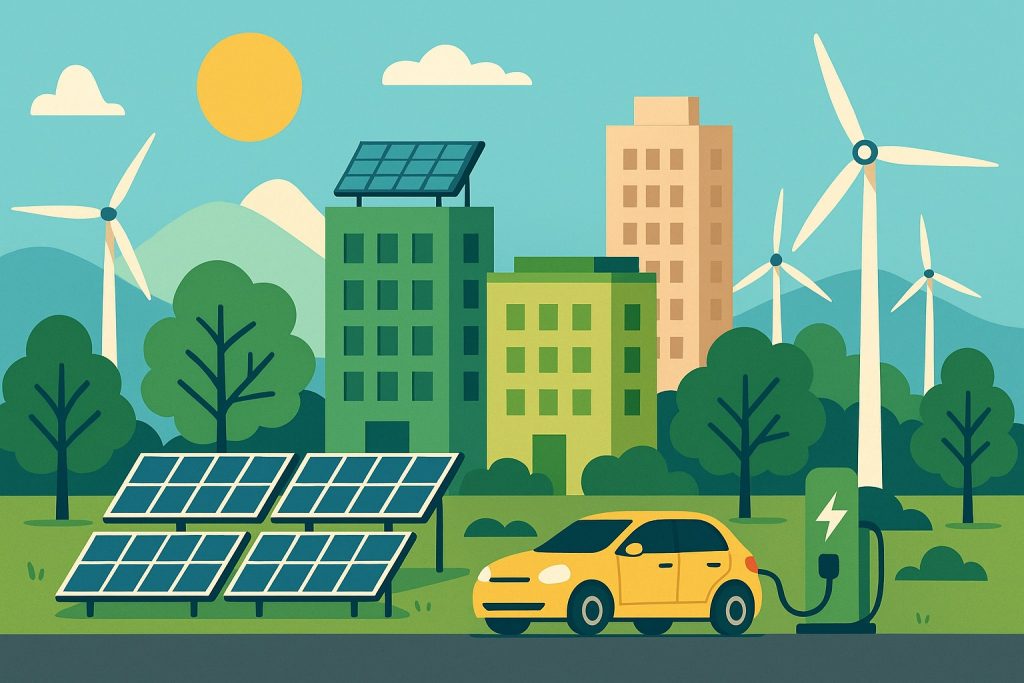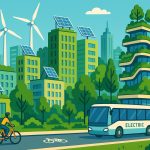As cities grow and the effects of climate change intensify, the need for sustainable energy solutions becomes urgent. Alternative energy—sources like solar, wind, hydro, and geothermal—is often hailed as the clean answer to our urban energy crisis. But how much of what we hear is true, and how much is hopeful hype? Let’s separate myths from reality.
What Is Alternative Energy?
Alternative energy refers to energy sources that are not based on fossil fuels. These sources are typically renewable, produce fewer emissions, and can help cities become more resilient and independent from global energy markets.
The most common types include:
- Solar power
- Wind energy
- Hydropower
- Geothermal energy
- Biomass
Myth #1: “Alternative energy can’t power a city.”
Reality: Many cities are already powered significantly—or even entirely—by renewables.
- Reykjavik, Iceland runs on nearly 100% geothermal and hydro energy.
- San Diego, USA aims to run on 100% renewable energy by 2035.
- Smaller towns, like Wildpoldsried, Germany, generate more energy than they use, selling the surplus to the grid.
While complete transition is complex, a growing number of urban areas are proving it is possible with the right mix of technology, policy, and infrastructure.
Myth #2: “Solar and wind are unreliable.”
Reality: Solar and wind are intermittent, but not unreliable when integrated properly.
- Energy storage systems (like batteries) can store excess power for nighttime or cloudy days.
- Smart grids balance supply and demand in real time across the city.
- Hybrid systems combine solar, wind, and other sources to provide stable output.
Many urban systems now include backup systems and intelligent distribution, making alternative energy a dependable part of the power mix.
Myth #3: “Alternative energy is too expensive.”
Reality: The cost of renewable technologies has plummeted over the past decade.
- Solar panel prices dropped by over 80% since 2010.
- Wind and solar are now often cheaper than coal or natural gas.
- Investing in renewables can save cities money over time by reducing fuel imports and health costs from pollution.
While initial installation can be costly, long-term savings and incentives often make renewables a smart economic decision.
Myth #4: “You need a lot of land for renewables.”
Reality: Innovative designs make it possible to integrate renewables into urban environments:
- Solar panels on rooftops, parking structures, and even windows
- Vertical wind turbines on buildings
- Floating solar farms on reservoirs
- Geothermal systems beneath city infrastructure
Urban space can be repurposed or optimized to generate clean energy without sacrificing valuable land.
Myth #5: “Alternative energy doesn’t reduce emissions enough.”
Reality: When combined with energy efficiency, alternative energy can dramatically lower urban emissions.
Cities account for over 70% of global CO₂ emissions. Transitioning to clean energy reduces:
- Air pollution
- Greenhouse gas emissions
- Dependence on fossil fuels
- Heat generated by traditional power plants
Even partial adoption can lead to major improvements in air quality and public health.
What Cities Can Do
To make the most of alternative energy, urban planners and policymakers can:
- Invest in renewable infrastructure and smart grids
- Encourage community solar programs
- Retrofit buildings for energy efficiency
- Offer incentives for businesses and residents to adopt green power
- Educate the public to dispel outdated myths
Glossary
- Smart grid – An intelligent electricity network that balances energy supply and demand using real-time data.*
- Energy storage system – Devices (like batteries) that store excess energy for use during peak times or outages.*
- Geothermal energy – Heat energy extracted from beneath the Earth’s surface.*
- Biomass – Organic material (like plant waste or wood) used as fuel for energy production.*
- Intermittent energy – Energy that is not constantly available, such as solar at night or wind on calm days.*


